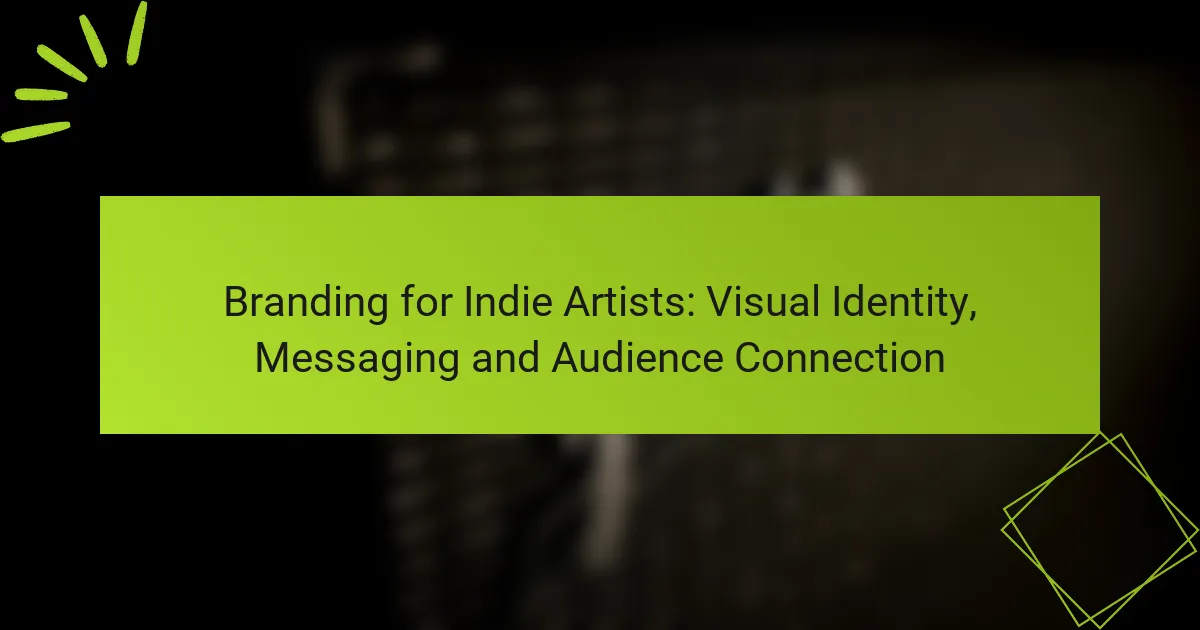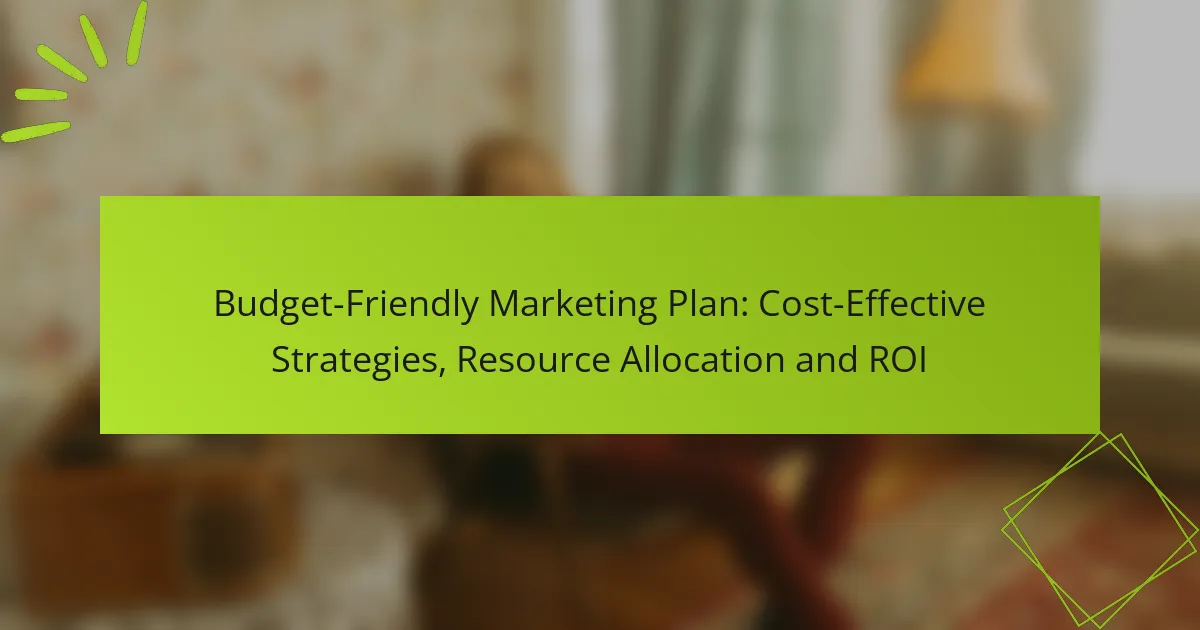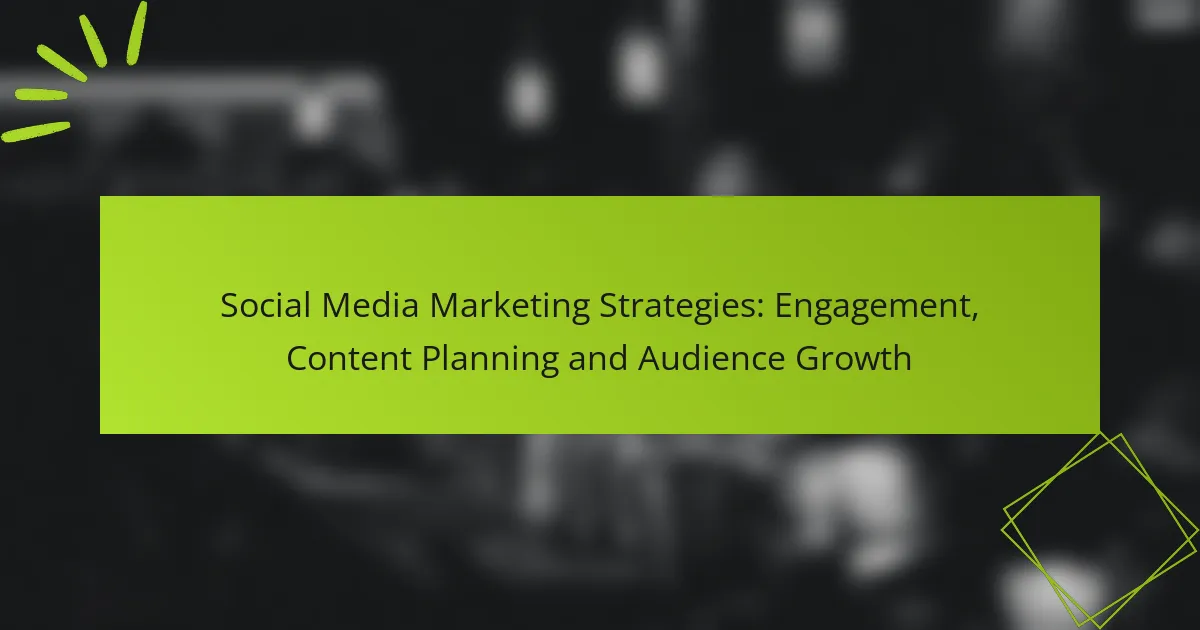For indie artists, establishing a compelling brand is essential to stand out in a crowded marketplace. A strong visual identity, characterized by thoughtful logo design and cohesive color schemes, combined with authentic messaging, allows artists to connect deeply with their audience. By prioritizing storytelling and consistent engagement, indie artists can cultivate loyalty and foster meaningful relationships with their fans.
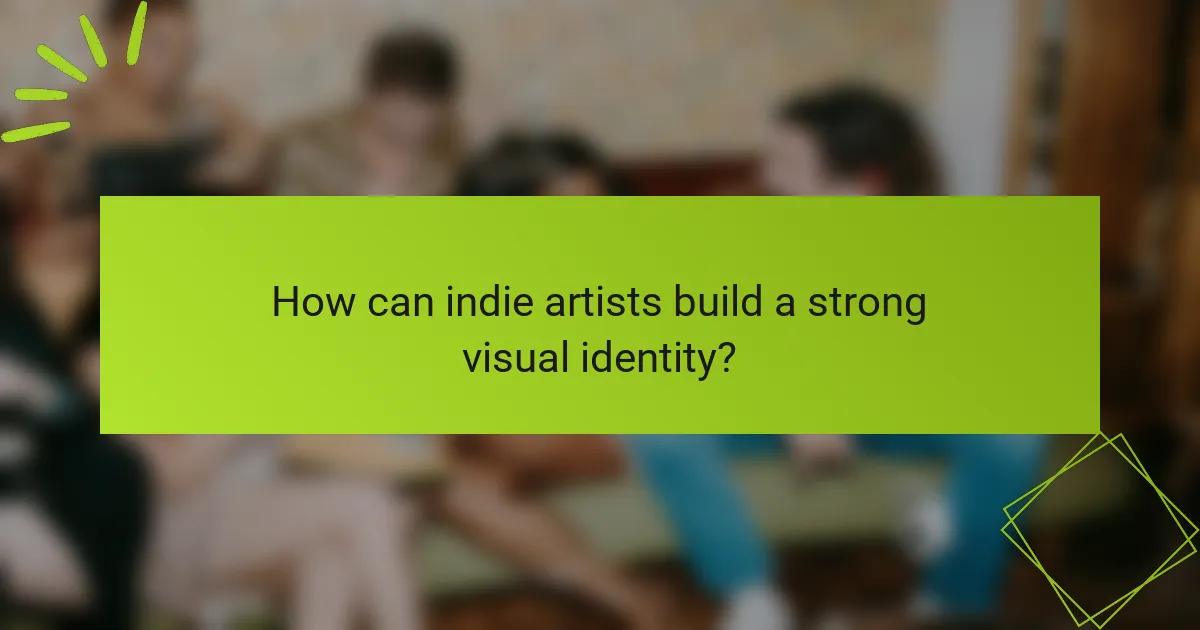
How can indie artists build a strong visual identity?
Indie artists can build a strong visual identity by creating a cohesive and recognizable brand that reflects their unique style and message. This involves careful consideration of logo design, color palettes, typography, and maintaining brand consistency across various platforms.
Logo design principles
A logo is often the first impression of an artist’s brand, so it should be simple, memorable, and relevant. Effective logos often incorporate unique shapes or symbols that resonate with the artist’s music genre or personal story.
When designing a logo, consider scalability and versatility; it should look good on everything from social media profiles to merchandise. Avoid overly complex designs, as they can lose clarity when resized.
Color palette selection
Choosing a color palette is crucial for establishing a visual identity that conveys the right emotions and themes. Colors evoke feelings and can significantly influence audience perception, so select hues that align with your music style and personal brand.
Limit your palette to three to five main colors to maintain consistency. Tools like Adobe Color or Coolors can help you generate harmonious color schemes that are visually appealing and effective.
Typography choices
Typography plays a vital role in visual identity, as it communicates personality and tone. Select fonts that are legible and reflect your artistic style; for instance, a modern sans-serif might suit electronic music, while a vintage serif could fit folk genres.
Limit the number of different fonts to two or three to ensure coherence across your branding materials. Consistency in font usage helps reinforce your identity and makes your content more recognizable.
Brand consistency across platforms
Maintaining brand consistency across platforms is essential for building recognition and trust. Use the same logo, color palette, and typography on social media, websites, and promotional materials to create a unified presence.
Regularly review your branding elements to ensure they align with your evolving artistic vision. Consistency helps your audience easily identify your work, whether they encounter it on Spotify, Instagram, or at live shows.
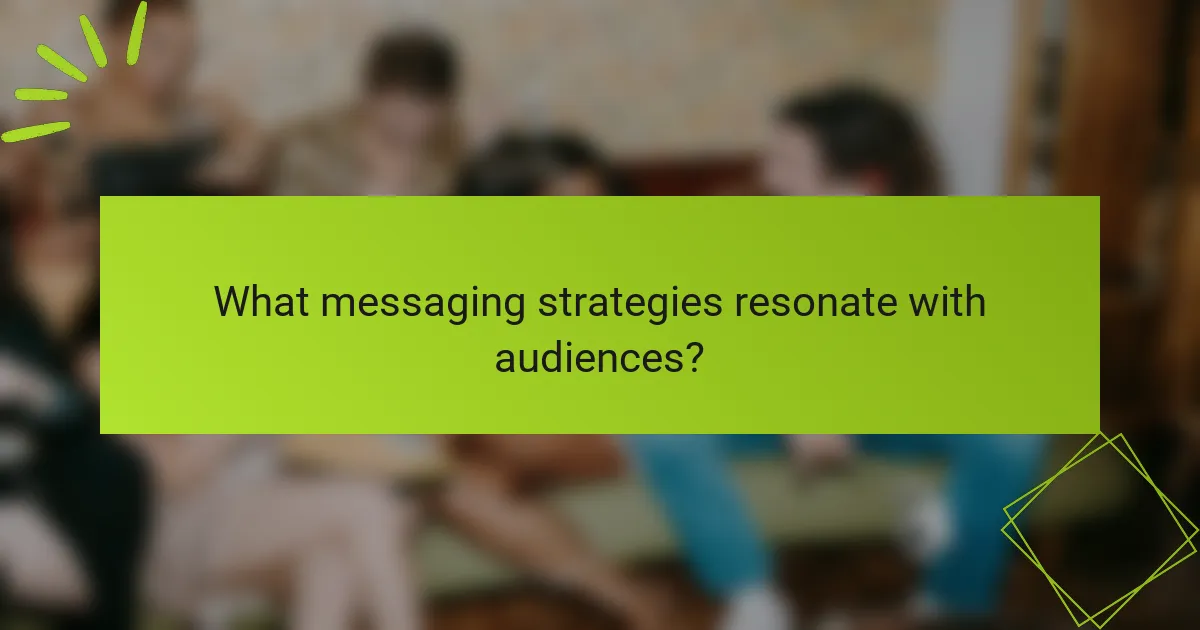
What messaging strategies resonate with audiences?
Messaging strategies that resonate with audiences often focus on authenticity, storytelling, and clear communication. By connecting emotionally and conveying a relatable narrative, indie artists can effectively engage their audience and foster loyalty.
Storytelling techniques
Storytelling techniques involve sharing personal experiences or narratives that reflect the artist’s journey and values. This can create a deeper emotional connection with the audience, making the artist’s message more relatable. For example, an artist might share the inspiration behind a song or the challenges faced during their career.
Utilizing various formats, such as social media posts, videos, or live performances, can enhance storytelling. Visual elements, like behind-the-scenes footage or artwork, can complement the narrative and make it more engaging.
Authenticity in communication
Authenticity in communication is crucial for indie artists to build trust with their audience. Being genuine and transparent about their music, values, and experiences helps create a loyal fan base. Audiences are more likely to connect with artists who share their true selves rather than those who project a manufactured persona.
To maintain authenticity, artists should avoid overly polished or scripted messages. Instead, they can share spontaneous thoughts or interactions with fans, which can foster a sense of community and belonging.
Tagline development
Tagline development is about creating a memorable phrase that encapsulates an artist’s identity and message. A strong tagline should be concise, catchy, and reflective of the artist’s unique style or mission. For instance, a tagline might highlight the genre of music or a core value the artist stands for.
When crafting a tagline, consider testing it with a small audience to gauge its impact. A good tagline should resonate with fans and be easy to remember, enhancing the overall branding strategy.

How can indie artists connect with their audience?
Indie artists can connect with their audience by leveraging authentic communication and engaging content across various platforms. Building relationships through consistent interaction and personalized messaging fosters a loyal fan base.
Social media engagement tactics
Utilizing social media effectively is crucial for indie artists to connect with their audience. Regularly posting updates, behind-the-scenes content, and engaging stories can create a sense of intimacy and community. Artists should respond to comments and messages promptly to foster interaction.
Consider using polls, Q&A sessions, and live streams to encourage real-time engagement. These tactics not only increase visibility but also allow fans to feel more involved in the artist’s journey.
Building a community through newsletters
Newsletters are a powerful tool for indie artists to maintain direct communication with their audience. By collecting email addresses through sign-ups on their website or social media, artists can share exclusive content, upcoming shows, and personal updates.
To keep newsletters engaging, artists should include a mix of content such as personal stories, music releases, and special offers. A consistent schedule, like monthly or bi-weekly updates, helps keep the audience informed and connected.
Collaborations with other artists
Collaborating with other artists can expand an indie artist’s reach and introduce them to new audiences. Joint projects, whether in music, art, or events, can create buzz and draw attention from both fan bases.
When considering collaborations, artists should look for those whose style complements their own. This synergy can enhance creativity and result in unique content that resonates with both sets of fans, ultimately strengthening community ties.

What are the key elements of branding for indie artists?
The key elements of branding for indie artists include defining brand values, understanding target audience demographics, and creating a cohesive visual identity. These components work together to establish a unique presence in the music industry and foster a strong connection with fans.
Defining brand values
Brand values represent the core beliefs and principles that guide an indie artist’s work and public persona. These values should resonate with the artist’s music and message, creating authenticity that fans can relate to. For example, an artist who prioritizes social justice might incorporate themes of activism into their lyrics and public statements.
To effectively define brand values, artists should reflect on their personal experiences, influences, and the messages they want to convey. A simple exercise is to list three to five words that encapsulate their artistic vision. This clarity will help inform decisions about marketing, collaborations, and audience engagement.
Understanding target audience demographics
Knowing the target audience demographics is crucial for indie artists to tailor their branding and outreach strategies effectively. This includes understanding factors such as age, gender, location, and musical preferences. For instance, an artist targeting younger audiences may focus on platforms like TikTok, while those appealing to older fans might prioritize Facebook or live performances.
Artists can gather demographic information through social media analytics, surveys, and engagement metrics. By analyzing this data, they can create content that resonates with their audience, ensuring that their messaging and branding align with the interests and values of their fans. Regularly revisiting this information helps adapt to changing audience dynamics over time.
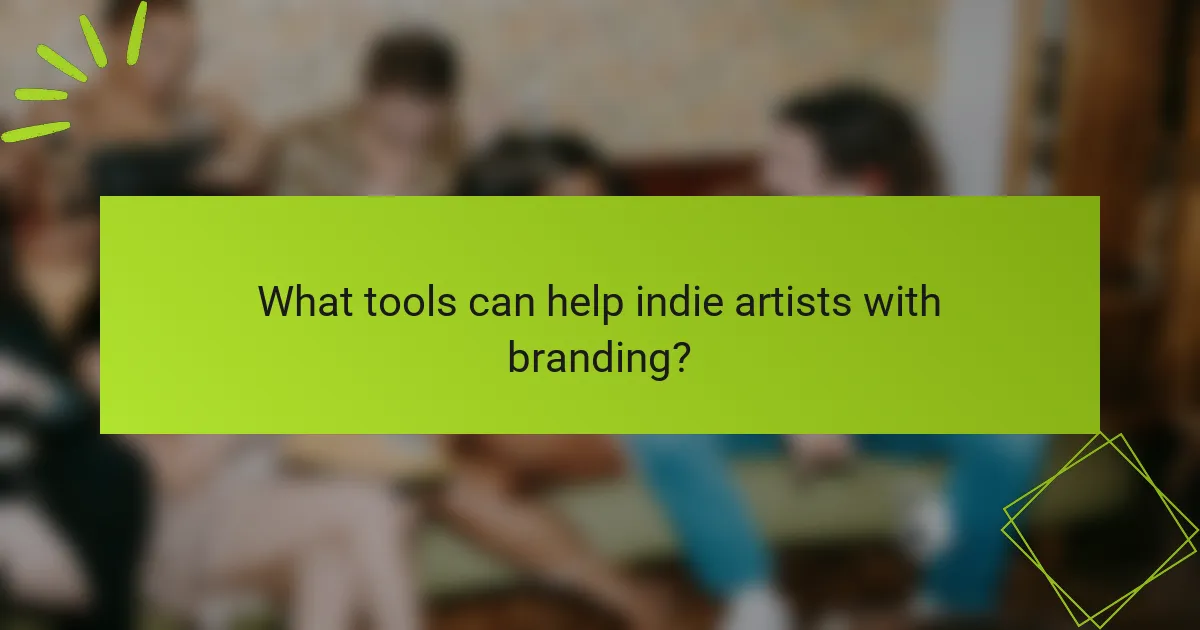
What tools can help indie artists with branding?
Indie artists can enhance their branding using various tools that streamline design, social media management, and audience engagement. Key platforms like Canva and Hootsuite offer user-friendly interfaces and features tailored to the needs of independent creators.
Canva for design
Canva is a versatile design tool that allows indie artists to create professional-quality visuals without needing extensive graphic design skills. It offers a wide range of templates for social media posts, album covers, and promotional materials, making it easy to maintain a consistent visual identity.
When using Canva, focus on your brand colors and fonts to ensure cohesion across all designs. Utilize the drag-and-drop functionality to customize templates quickly. Consider starting with free features before upgrading to Canva Pro for additional assets and tools.
Hootsuite for social media management
Hootsuite is an effective social media management platform that helps indie artists schedule posts, track engagement, and analyze performance across multiple channels. By consolidating your social media efforts, you can save time and ensure a consistent online presence.
To maximize Hootsuite’s benefits, set up a content calendar to plan your posts in advance. Monitor key metrics such as engagement rates and follower growth to adjust your strategy as needed. Avoid over-scheduling; aim for quality content rather than quantity to foster genuine connections with your audience.
